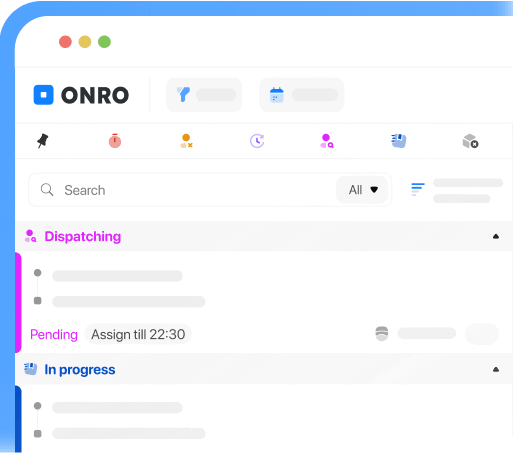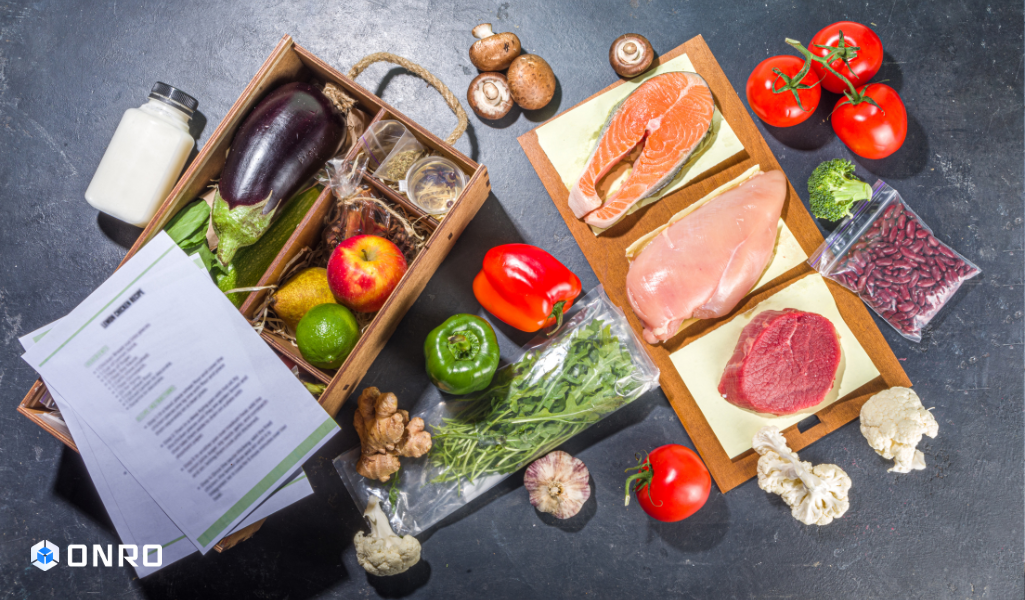The impact of weather on delivery operations can not be denied. Delivering goods in harsh weather conditions is one of the things that drivers and fleet managers face when managing delivery. Adverse weather conditions such as heavy rain, snowstorms, fog, and extreme temperatures can significantly disrupt the process of delivery, and increase the risk of accidents, delays, and damaged goods.
Try Onro for Free
Get your free access to the Onro All-in-one Delivery Management Software.
How do Weather Conditions Affect Delivery?
Along with the calendar winter come heavy snowfalls and ice, which can be accompanied by a significant drop in temperature. The length of the sunny day is decreasing. Such weather nuances do not benefit the operation of delivery that delivers over long distances. Low adhesion strength of tires to the snow-covered road surface can have a negative impact on transportation. A strong, gusty wind can stop traffic due to poor visibility, as well as “drift” vehicles on a mirror surface into icy conditions.
Safety on the road requires skill from the driver, even physical strength and endurance. When transporting in winter, you often have to deal with the formation of many kilometers of traffic jams from slow-moving cars. The traffic flow moves at a low speed, equal to several meters per hour. Accordingly, delivery may be delayed, disrupting the schedule.
Another nuance is the winter New Year holidays. They significantly increase the intensity of traffic and cargo transportation during this period. Such factors may negatively affect compliance with the baggage delivery schedule.
The Importance of Preparation
However, this regime occurs from year to year, because winter cannot be canceled. It should be noted that not every carrier is able to decide on such a complex type of activity. Not all companies are able to deliver cargo safely and securely to its destination. Only experienced and modernized services successfully transport goods during the cold period.
The listed factors do not mean at all that the organization of delivery in cold weather cannot be made more reliable, better planned and controlled at every stage of the baggage route. The main condition required from the cargo carrier is the ideal technical condition of the vehicles. An advantage will be the impeccable coordination of the participants in the process at each stage, as well as the coherence of cooperation with the shipper.
How Are Goods Protected in Cold Weather?
The winter period requires certain skills from the carrier. It is known that the above factors can slow down the delivery process and threaten traffic jams. Such downtime at low temperatures can affect the quality and safety of products. Carrying out rigging activities becomes much more difficult, and frosts can lead to damage to goods that do not have proper protection.
Delivery of Goods Requiring Compliance with Temperature Conditions
In winter, products need to be transported; in order to maintain their quality and safety, certain temperature parameters must be observed. These could be, for example, ornamental plants. Transportation of animals requires more careful attention. Such a special cargo must be kept, and therefore delivered, warm.
The main condition for high-quality delivery is safety and optimal temperature conditions in the van designated for this purpose. Special requirements must be followed when transporting certain types of medicines or medical equipment. To transport such luggage in winter, appropriate containers are required, as well as vehicles equipped for this type of product.
Influence of Weather Conditions on the Costs of Services
For a delivery company, every trip must be profitable, even if it is carried out in difficult weather conditions. This circumstance determines prices, which may differ in summer and winter. On the one hand, the company experiences a decrease in productivity during this period, on the other, the costs of maintaining equipment increase. First of all, this concerns the use of fuel intended for operating vehicles in cold weather, as well as the use of winter tires, oils, etc.
It is possible to make transportation high-quality and successful only thanks to a well-thought-out route, responsible work of employees, as well as goodwill and understanding on the part of the customer. Only in this case will the cargo be delivered to its destination on time and with minimal costs in all respects.
How to Mitigate These Problems
A delivery management software can mitigate the impact of weather on deliveries by providing real-time data, intelligent routing, and advanced planning features. By leveraging GPS and traffic data, the software can reroute drivers to avoid dangerous areas, road closures, or traffic jams caused by bad weather, ensuring safer and more efficient deliveries.
Onro offers an effective monitoring solution for your customers to track their orders in all weather conditions, which can cause delayed delivery.
Try Onro for Free
Get your free access to the Onro All-in-one Delivery Management Software.

Conclusion
Weather conditions can have a significant impact on delivery operations, leading to delays, increased risks, and higher operational costs. Factors such as snow, ice, and freezing temperatures challenge both drivers and vehicles, making it essential for companies to prepare adequately. Leveraging a delivery management software plays a crucial role in further minimizing the impact of weather and mitigating some of the delivery problems.



